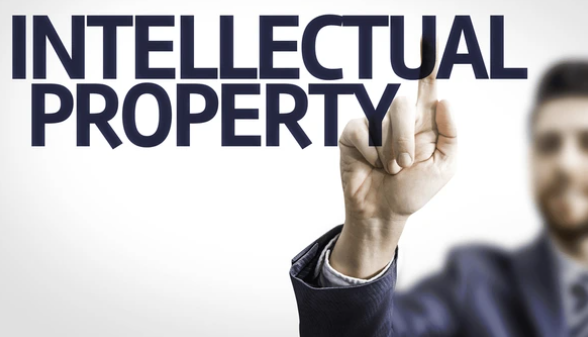The intellectual property (IP) licensing has gone a long way with the pace of technology…
Role Of Intellectual Property Rights In The Era Of Quantum Technology
Introduction
Recent advances in the technical field of quantum technologies have not only experienced high amount of attention in information science and software engineering disciplines but also gained a wide interest of government due to its complexity and global significance. The unique characteristics and advanced applications of quantum computing technologies are vast and vary from (1) decoding computational complications that are beyond the scope of conventional computer by engaging quantum or quantum-conventional hybrid algorithms; (2) bringing unprecedented accuracy, resolution and sensitivity in quantification through quantum metrology and sensing; (3) triggering quantum systems to enrich our basic understanding towards nature; (4) forming a new era of secured communication models. These advancements are of great area of interest to societies, businesses, international organisations, governments etc. as it is evident from the fact that there is a current worldwide investment of almost $30 billion in the research and innovation of quantum science and development and it is projected to reach $42.4 billion by 2027.
[Image Source: IStock]
UNDERSTANDING QUANTUM COMPUTING TECHNOLOGY
The quantum computation uses the kind of technologies that process the information by using effects which extracts its fundamental elements from laws of classical quantum mechanics that includes superposition, entanglement, and tunnelling. The most fundamental element that distinguishes the quantum computing from conventional computing is the use of qubits (quantum bits) which are the quantum form of computer binary bits. The quantum computers encode or process data as qubits which can be a 0 and 1 or a superposition of both which represent the possible states of qubits. The quantum computing also allows the separation of qubits from its superposition state while keep the same characteristics of each one, this is called quantum entanglement. In addition to these two, there is a phenomenon of quantum tunnelling, that shows how the particles of subatomic size make their way across barrier that is higher in energy. In general, the quantum computing technologies exploit these unique quantum mechanical techniques to achieve their core principle of working to realise the advantages over existing conventional technology. These include quantum metrology, quantum sensing, quantum excommunications, quantum simulation and quantum computation.
QUANTUM COMPUTING AND THE FUNCTION OF INTELLECTUAL PROPERTY LAWS
Quantum computing technology and its components can be regulated and governed by different kinds of intellectual protects like patents, trademarks, trade secrets, and copyrights. In order to bring the understanding on the perspective of IPR related rights on the quantum computing and its various components, it is imperative to group them into following heads: software; hardware and algorithms.
i. Copyright Protection and Enforcement
The general objective of copyright is to encourage creativity, freedom of expression and technological process by assuring designers, artists, composers, authors, and other creative people, who take risk of their capital in presenting their works before the public domain. Concerning the software components of quantum computing technology, it would be protected under the head of Copyright. As per the World Intellectual Property Organization Copyright treaty and World Trade Organisation Agreement on TRIPs, firmware and software source code are be considered as literary works and can be regulated under copyrights. Since the formal expressions of computer source code is protected, not its functionality, the following components of quantum computing are eligible for copyright regulation provided these are original and exist in a tangible form of expression: quantum stabilization code; quantum computing platforms; quantum configuration; quantum arithmetic units; the quantum application programming interface and other quantum software. Copyrights of these software components, which are obtained through registration, bestow the author with exclusive rights which extends throughout the life time of the author and then 60 years from the year in which the author died.
Another important area which seeks the attention is protection of quantum algorithm. Copyright regulation does not protect algorithms per se, as these are considered as general principles and abstract ideas. The reason is that the latter is a part of public domain and will be open-sourced.
ii. Patent Protection and Enforcement
Patents are the indicator of the dynamics and pace of invention at the innovation period. The fundamental intent of the patent right is to promote the innovators to reveal, generate, and market their innovation with intention of profit return on their innovations. Minimum international threshold concerning the scope and nature of IP necessitate that “patents shall be available for any inventions, whether processes or products, in all fields of technology, provided that they are new, involve an inventive step and are capable of industrial application” and “the term of protection available shall not end before the expiration of a period of twenty years” . As mentioned, patent deals with product or process, thus make the following hardware components of quantum computing eligible for patent protection provided these crosses the thresholds of usefulness, novelty and non-obviousness: quantum memory; quantum-classical interface; quantum interference devices; decoders; compiler engines; quantum integrated circuit chips; quantum blocks; quantum processors and quantum execution block. Concerning things which are ineligible for patent protection includes abstract ideas, like natural phenomena, mathematical formula. However, transition of an abstract idea or mathematical formula into a practical phenomenon can be considered for patent protection.
iii. Trade Secret Protection and Enforcement
In addition to patent and copyright protection, trade secret is another way to safeguard inventions. This kind of protection arises automatically and is not restricted in time until the secret behind the technology is independently discovered or disclosed by the owner. Trade secret may be economically preferable intellectual property option over others due to “(a) the nascent-stage nature of many of these technologies; (b) the market structure; and (c) the potential business forms (for e.g., quantum cloud-computing as a service)” . These broader advantages and potentially unlimited years of protection for trade secrets provide it a certain edge over other IP protections. There are different reasons behind maintaining vital information a trade secret, it may be of the technological dominance, anthropogenic assessment or any nation protection concerns.
Other than the protection of hardware and software component of quantum computing. Layouts, hardware modelling, software interfaces, logos, artwork, and product design can be protected by the mixture of other remaining IP rights which includes trade dress, tradename rights and design rights.
INTERSECTION OF INTELLECTUAL PROPERTY LAW WITH FAIR COMPETITION PROMOTING LAWS
Governments and policymakers should use strategy like innovation policy pluralism, i.e., to match, mix and form Intellectual Property with other alternatives like tax law, consumer protection law, contract law etc. so as to “encourage fair trading situations, remedial and externalities and balance the effects of potential innovations in the market structure” .
CONCLUSION
This article puts the case for governance and anticipating consequences of quantum computing in real world and accordingly suggests that there is highly need from governments, policymakers, and think tanks to propose governance and to form regulatory intellectual property right strategies. Different instances have shown us that it is challenging for intellectual property framework to anticipate spectacular advancement of future emerging technologies and their potential consequence on the intellectual property system. Further, in order to promote equal access, technology transfer and fair competition, time is ripe for policymakers to reconcile and complement the intellectual property laws with other regulatory law like antitrust law.
Author: Paramjeet Singh, a student of Rajiv Gandhi National University of Law, Punjab, in case of any queries please contact/write back to us via email to chhavi@khuranaandkhurana.com or at IIPRD.



